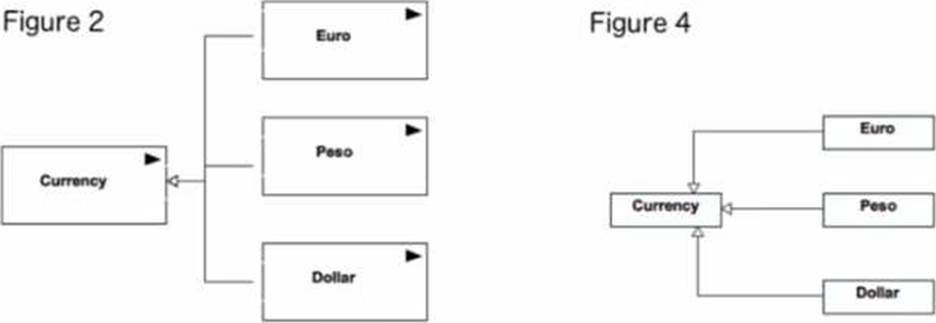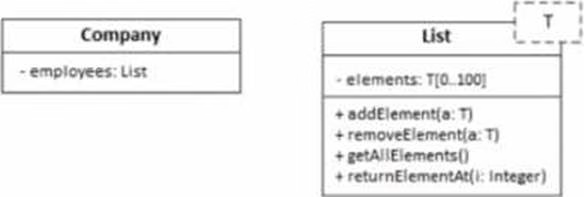OMG OMG-OCUP2-ADV300 OMG Certified UML Professional 2 (OCUP 2) – Advanced Level Online Training
OMG OMG-OCUP2-ADV300 Online Training
The questions for OMG-OCUP2-ADV300 were last updated at Dec 20,2025.
- Exam Code: OMG-OCUP2-ADV300
- Exam Name: OMG Certified UML Professional 2 (OCUP 2) - Advanced Level
- Certification Provider: OMG
- Latest update: Dec 20,2025
Given the following fragment from a profile definition:

Which statement is correct regarding the application of the profile?
- A . A class stereotyped as an «architecture decision» must contain attributes named Complexity. Risk, and Status with the designated Enumeration types
- B . A class stereotyped as an «architecture decisions will have Stereotype Properties named Complexity. Risk, and Status with the Enumeration types designated in the profile.
- C . A class stereotyped as an «architecture decision» must contain attributes named Complexity. Risk, and Status and they may be any user-defined type.
- D . A class stereotyped as an «architecture decisions must contain exactly three attributes with user-defined names, two of which are of type Rank, and one of type Status.
Which capability Is provided by the Profile mechanism?
- A . storing user-specific configurations of model settings
- B . creating new metamodel elements for specific purposes
- C . adapting existing metamodel elements for specific purposes
- D . configuring model libraries and a set of keywords to be used for a model
Let E be a UML 2.5 NamedElement with a name property of ‘_name" and with a name Expression property of "_expresslon".
Which one presentation or set of presentations of the name of E in a tool conforms to the OMG specification?
- A . _name
- B . _expression
- C . S_expression$ OR _name
- D . S_expression$
_expression
OR
_name:_expressk>n - E . UML 2.5 no longer includes a nameExpression properly within NamedElements.
In a model of a commercial transaction, actors might exchange euros, pesos, and dollars.
Which figure illustrates compliant use of UML information items for these currency exchanges?


- A . Figure 1
- B . Figure 2
- C . Figure 3
- D . Figure 4
Consider the following diagram fragment:

Which statement is correct about the diagram fragment?
- A . The diagram fragment is a valid UML diagram.
- B . To use the template List. Company must be a bound element to List.
- C . List cannot be used by Company unless Company is also a template.
- D . List cannot be used as a data type, only a bound element to List can.
Consider the following diagram fragment:

Which statement is correct about the diagram fragment?
- A . The diagram fragment is a valid UML diagram.
- B . To use the template List. Company must be a bound element to List.
- C . List cannot be used by Company unless Company is also a template.
- D . List cannot be used as a data type, only a bound element to List can.
Consider the following diagram fragment:

Which statement is correct about the diagram fragment?
- A . The diagram fragment is a valid UML diagram.
- B . To use the template List. Company must be a bound element to List.
- C . List cannot be used by Company unless Company is also a template.
- D . List cannot be used as a data type, only a bound element to List can.
Consider the following diagram fragment:

Which statement is correct about the diagram fragment?
- A . The diagram fragment is a valid UML diagram.
- B . To use the template List. Company must be a bound element to List.
- C . List cannot be used by Company unless Company is also a template.
- D . List cannot be used as a data type, only a bound element to List can.
The implementation of the collection functions cannot be overridden.
Which UML concept should these designers use?
- A . Classes
- B . Interfaces
- C . Power Types
- D . Class Templates
A project’s requirements call for flexibility in the collection class design. Most of the collections will be a fixed length of 25 elements. However, allowance must be made in the design for collections that are a fixed length longer than 25.
Which model fragment supports the project’s requirements?
A)

B)

C)

D)

- A . Option A
- B . Option B
- C . Option C
- D . Option D
Latest OMG-OCUP2-ADV300 Dumps Valid Version with 200 Q&As
Latest And Valid Q&A | Instant Download | Once Fail, Full Refund

